boojies
Recruit
★★★★
- Joined
- Jun 28, 2018
- Posts
- 332
This is a preliminary hypothesis. There are numerous issues that need to be worked out with it. One of the primary issues is that not all of the literature indicates that it is typical for high functioning autistic people to have such intelligence imbalances. For example, the following study found a discrepancy between PIQ and VIQ in Aspergers --- with favoring of VIQ as expected --- but PIQ was less than a point below 100, and VIQ was simply elevated.

 link.springer.com
link.springer.com
However, PIQ and VIQ actually encompass many sub-scores, and make use of numerous memory domains, such that an isolated deficit under these domains may be hidden in the averaged score for that domain by the same sort of intelligence imbalance that traditional thought would put forth as being of the essence of high functioning variants of autism. For example, Aspergers was initially considered as potentially indistinguishable from NVLD, and although there has been some research indicating distinctions between the two, the intersection between the two groups was far too strong to merely be coincidental (some statistics asserting something like an 80% overlap if memory serves). Given the prevalence of misdiagnosis in this area, I wouldn't contest a 100% intersection with those having been diagnosed with Aspergers but having not an NVLD being improperly diagnosed with Aspergers and perhaps more appropriately diagnosed with what was once termed HFA, itself a species of the genus by the same name (High Functioning Autism).

 www.aane.org
www.aane.org
NVLD is characterized by deficits in visual intension (things that denote other things --- words are verbal intension that denote their extension, and pictures are visual intension that denote their extension) processing, and has been compared to being blind but able to see (for example, because of severely retarded long term visual memory but intact sight).

 nvld.org
nvld.org
Interestingly, congenital cortical blindness has no known co-occurrences with psychosis.

 mindhacks.com
mindhacks.com
This is interesting because of its similarity to NVLD, which is itself similar to (arguably equivalent to) Aspergers, a form of high functioning autism.
Autism itself has been demonstrated by converging lines of multidisciplinary evidence to be an essential inversion of psychosis.
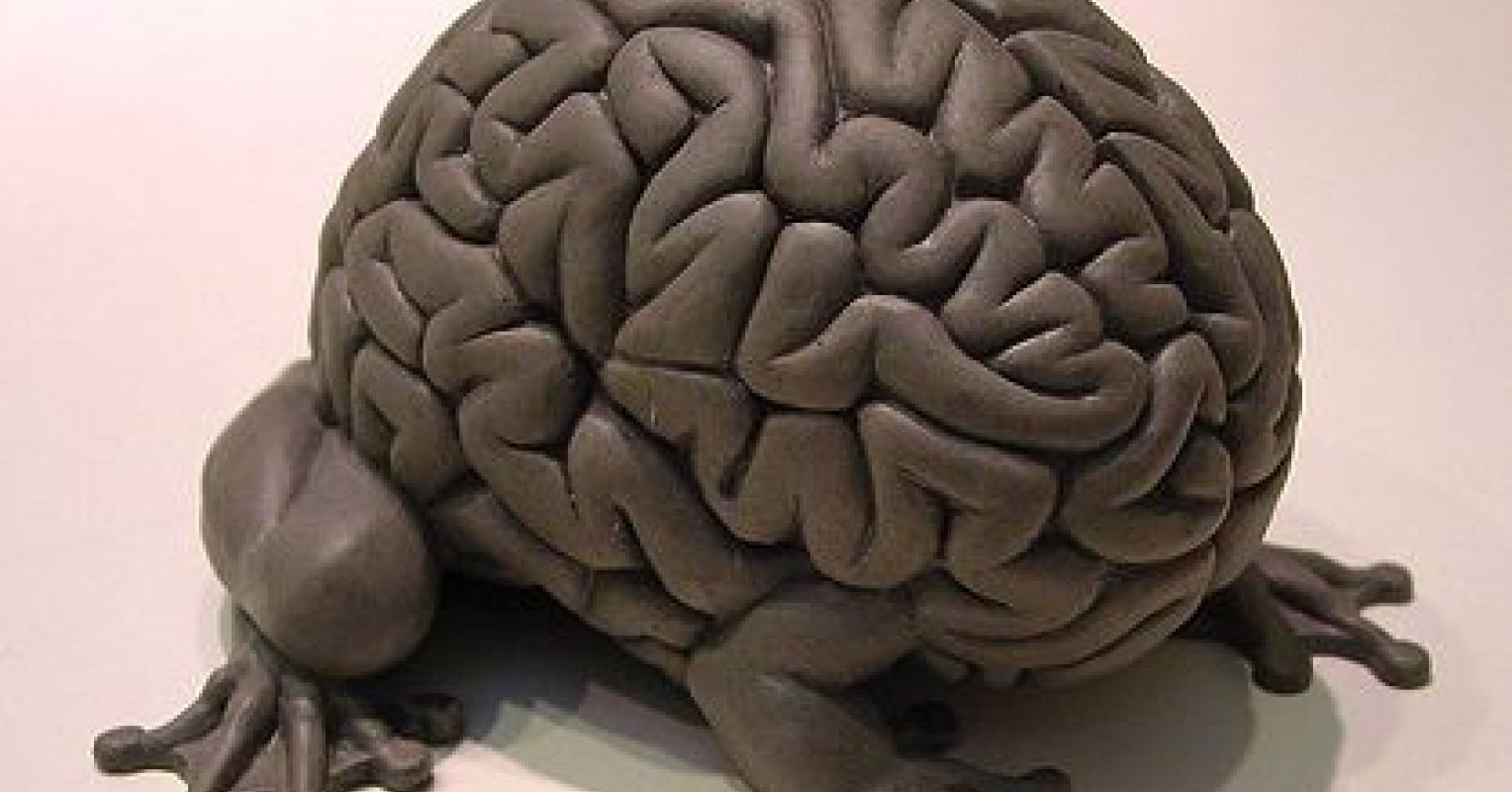
 www.psychologytoday.com
www.psychologytoday.com
By the classical taxonomy, autism had three primary forms: Kanner Autism, which is low functioning autism, which is characterized by GIQ in the retarded range and with an imbalance between intelligence scores favoring PIQ (visual intelligence); HFA, which is a species of High Functioning Autism that has the same name as its genus (abbreviated to clearly distinguish the two), which is with the intelligence imbalance of Kanner autism (verbal deficits with visual superiority); and Aspergers, itself a form of high functioning autism, but with the inverse cognitive imbalance of traditional autism and HFA (so, it favors verbal intelligence with concomitant deficits in visuospatial domains). Today, there has been a move away from viewing autism by this taxonomy, particularly in the USA. Rather, autism according to the APA is now but a spectrum from low to high functioning. By the more cutting edge research of those who study the autism-psychosis hypothesis, autism is actually a direction on a spectrum that has psychosis at the opposite extreme. Even more cutting edge takes may posit that autism is a set of phenotypic variations of a core autism genotype, with each such variation having a complementary schizophrenia that is its inverse. Autism research is massively multifaceted and is rapidly becoming politically invested because of research indicating that it is essentially an evolved extreme form of the atheist genotype.
As a person diagnosed with Aspergers, I can anecdotally state that I was professionally assessed as having NVLD, with the manifestation of it being a severe retardation isolated to my long term visual memory coupled with generally poor visual intension processing abilities, which contrasted with my superior and very superior verbal processing abilities. There is a significant body of scientific literature that would suggest similar findings in others with Aspergers diagnoses, because of the extremely high co-occurrence of NVLD. This is essentially the inversion of HFA autism, which is such as Temple Grandin has.

This raises a conundrum though. Although modern takes of the autism-psychosis hypothesis posit inverted sets of phenotypic variations on core autism and and schizophrenia genotypes, with each member of one of the sets having its own diametric inversion in the other, I have not seen autism-psychosis literature address the seemingly already inverted nature of autism expressions such as Aspergers (concomitant NVLD --- like being blind, except for being able to see) and HFA (superiority of visual intension processing that is concomitant deficiencies of verbal intension processing --- like being deaf but able to hear?). Given the already seemingly inverted nature between these subtypes of autism, how would one also imagine schizophrenia as having distinct inverses of these expressions?
The answer is to think of autism as being extension sans intension, and schizophrenia as being intension sans extension. Speaking rather abstractly, if we say that blindness is a lack of seeing what is there, the opposite of this is not a lack of hearing what is there, but rather is seeing things that aren't there. And the opposite of a lack of hearing what is there is hearing what is not there. So, the psychosis variant of NVLD concomitant forms of autism is schizophrenia with visual hallucinations, and the psychosis variant of autism with verbal deficits is schizophrenia with auditory hallucinations. There is some evidence that supports this. For example, schizophrenics having auditory hallucinations activate the part of the brain that processes verbal intension even in the absence of it in the environment,

 www.ncbi.nlm.nih.gov
www.ncbi.nlm.nih.gov
conversely, those with verbal deficiency variants of autism demonstrate diminished activation of this brain region even in the presence of verbal intension in the environment.
So, this is in support of the hypothesis that I have put forth, that autism is ability to access extension (such as the directly accessible visual environment) with an inability to process the associated intension (such as thinking in pictures), whereas each such autism has a diametrically inverted schizophrenia that is an ability to process intension of a given domain (such as the dreamlike state of psychotic decompensation), but without being able to access the actual extension (actual reality, the actual visual environment as it exists externally rather than in internal visual imagery).
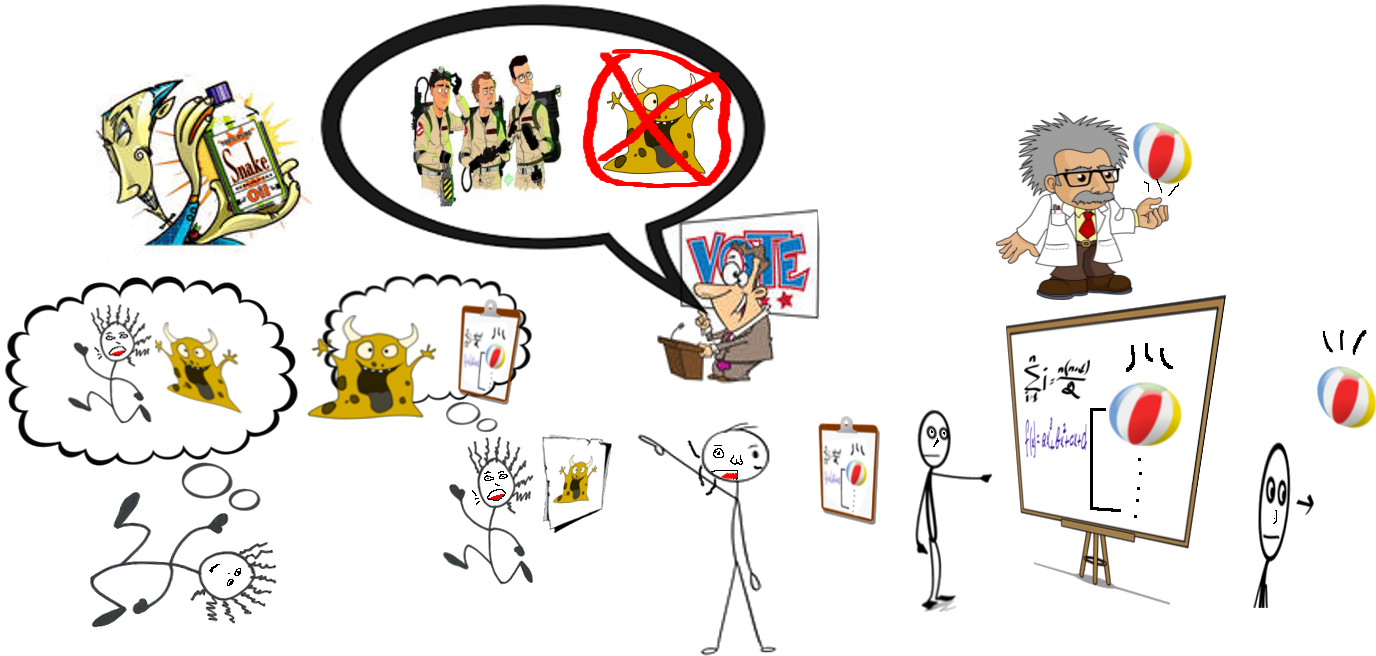
An artists depiction I made showing the progression, from far left to far right, from visual augmentation variants of (at least domain isolated!) low functioning schizophrenia (catatonic, stuck in a REM like state and fully dissociated from the visual environment) and visual impairment variants of (at least domain isolated!) low functioning autism (catatonic, completely incapable of making use of visual intension despite being able to see the visual extension). Low functioning autism would be concomitant visual and verbal intension processing deficits, high functioning variants of autism are deficits in one or the other with superiority in the one that is not impaired (this is a corollary of the high functioning nature of such autism, as, after all, the GIQ must be at least not in the retarded range to qualify, yet there is domain isolated retardation in the processing of either verbal or visual intension).
Schizophrenia and other forms of psychosis have been hypothesized --- and there is a good deal of evidence supporting this hypothesis --- as being false signaling strategies for gaining social benefits without merit.
This is in terms of signalling theory.

 en.wikipedia.org
en.wikipedia.org
A great example is the psychotic girl who because of her delusions imagines herself to have been sex trafficked, and who becomes wealthy based on this delusion (movie deals, public speaking deals, and so forth), despite having never been actually sex trafficked.

 reason.com
reason.com
There is not necessarily conscious malfeasance in such cases; rather, such conscious malignancy can be interpreted in situations by laypeople who lack awareness of how psychosis can be an evolved false signalling strategy.
Just as schizophrenia with visual hallucinations could result in someone falsely signalling that they were sex trafficked, because they had essentially a dreamlike condition in which they were that they subsequently failed to distinguish from the reality of the physical existence,
I would put forth that autism with verbal deficiencies (HFA, as Temple Grandin has) is an evolved intelligence imbalance that protects from false signals that take the form of verbal intension. There is evidence in support of this. For example, this research found that atheists are more likely to activate visual memory when contemplating god, and hypothesized they then reject religion after finding no matching image.

 www.al.com
www.al.com
It is important to introduce the concepts of integration, disintegration, and misintegration at this point. These words and their basic definitions are credited to Leonard Peikoff; however, I am not certain if I use them exactly as he would approve of.
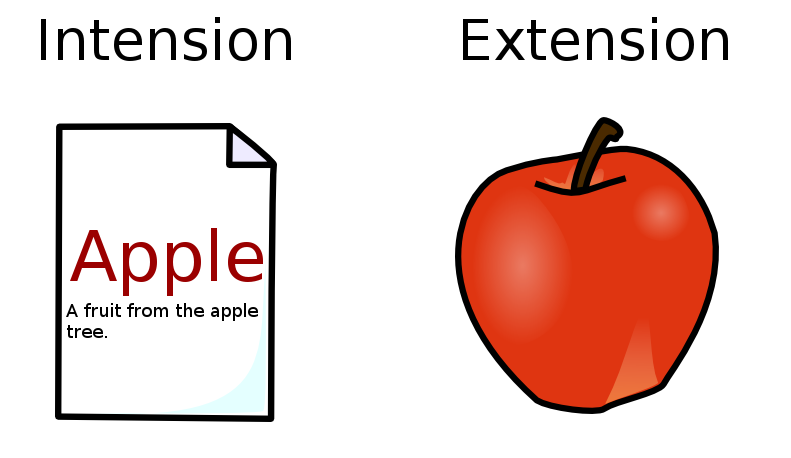
Again, intension can be verbal or visual, but it is something that denotes something else. Indeed, in the above image, both the word "apple" and the image of the apple are intension, but I used the word to denote verbal intension itself (it is intension denoting intension), and I used the image to denote extension (it is intension denoting extension). I cannot actually demonstrate extension to you via a post on this forum, as our sensory organs are too far separated for me to use ostension with you.
 www.informationphilosopher.com
www.informationphilosopher.com

Integration is when someone possesses intension as is able to rationally associate it with its extension. For example, I have intension that is the word "water," complete with its associated definition, and I am able to associate this intension with its extension in reality; for example, via ostension I can point to water and say "water." Integration is characteristic of a proper association with actual reality, for it is quite literally the act of having intension that is directly abstracted from the existence it denotes, and thereafter appropriately associated with it.
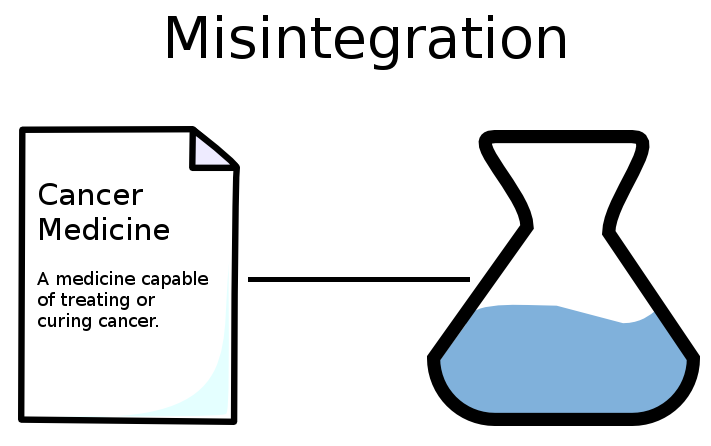
Misintegration is when you have a piece of intension, such as the verbal intension "cancer medicine," and you incorrectly associate it with a piece of extension. For example, many homeopaths will point to a vial of water and claim that it is cancer medicine. Well, vials of water exist in reality, and "cancer medicine" is a valid piece of verbal intension, but associating the intension "cancer medicine" with a vial of water is a misintegration of verbal intension to the physical existence.

Disintegration is when you have a piece of intension, such as the verbal intension "Zeus," that has no actual extension in the physical existence. There are statues of Zeus, but nobody ever thought they were Zeus. There are paintings of Zeus, and yet nobody thought they were Zeus either. Zeus only ever existed as a piece of verbal intension, the recitation of the authoritative characteristics of Zeus from the mythology of the time. Nobody who believed in Zeus thought that a statue of Zeus was Zeus, nor that a painting of Zeus was Zeus, but they did think that Zeus was exactly as the authoritative verbal intension described him as being, and indeed Zeus, because of not actually ever existing in reality, was never anything more than the reification of the verbal intension that described him.
And that brings us to the reification fallacy.
 en.wikipedia.org
en.wikipedia.org
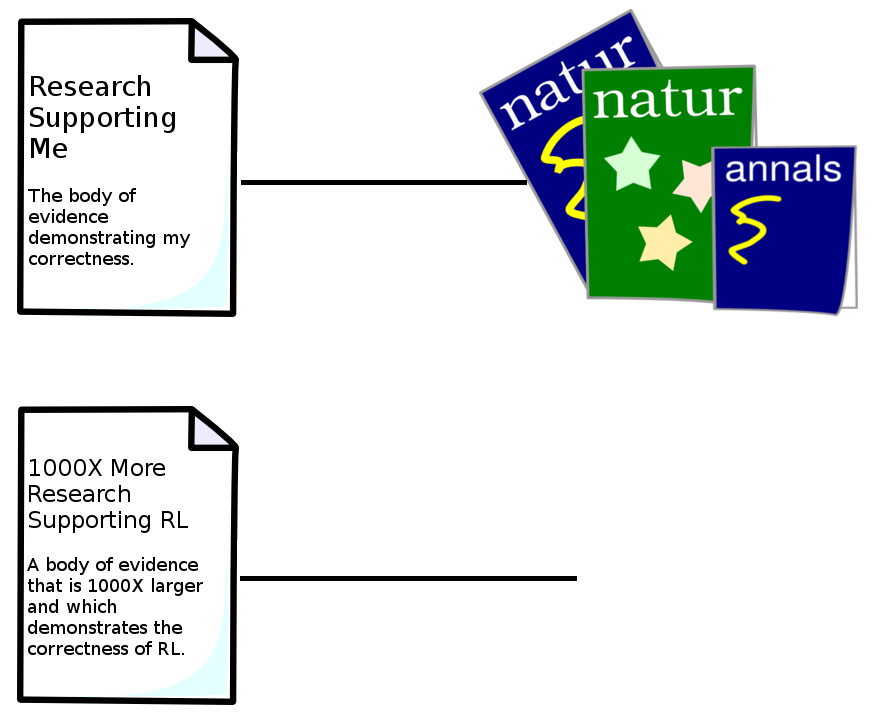

I made these images for a different community (lookism) and RL is not a known person here, but he is an intelligent sociopath who I commonly argue against on lookism.
So, the reification fallacy is when you have a disintegration, like the verbal intension "Zeus," that has no extension in existence (though it may have what even the believers recognize as visual intension in the form of statues, paintings, and such things), and you treat the abstraction as if it were the thing it purports to be. Nobody ever thought that Zeus was a statue, nor than he was a painting: even the believers in Zeus recognized that these things were forms of visual intension. However, they reified the verbal intension into being actually its own extension! Zeus actually was the verbal intension that described him.
However, what of the person such as Temple Grandin, who presumably has isolated deficiencies of verbal intension processing but intact visual intension processing? Well, when you realize that this is the existence of Zeus in the minds of all who believed in him,

I think it becomes clear. Someone with visual intension processing intact is able to think in terms of statues of Zeus, and paintings of Zeus, and such things. But nobody actually believes these things as Zeus --- even the most staunch believers in Zeus recognize that these are merely pieces of visual intension that denote the extension of Zeus. But there is no extension of Zeus in reality. The notion that Zeus has an extension in reality is from the belief in the verbal intension that describes his characteristics, which are reified and made into the "existent" Zeus. But this requires intact verbal intension processing abilities. Someone with isolated retardation of verbal intension processing abilities is "deaf" to the verbal intension that is Zeus, despite being able to hear it. They cannot comprehend Zeus from the verbal intension that becomes him via the reification process, for they cannot process verbal intension, and yet to the believers in Zeus, although they imagine this verbal intension as having extension, really the intension is its own extension. Zeus is nothing more than the authoritative verbal intension that describes him. He couldn't be anything else, for he never had existence; therefore, he was never a piece of extension that intension was derived from, but rather he came into being from the verbal intension that described him and was reified as being him.
So in this sense it becomes clear how visual oriented forms of autism are protective of belief in a disintegration such as Zeus, which is only existent as the reification of verbal intension as literally being that which it purportedly denotes, for even the staunchest believers in Zeus recognize that a statue of Zeus is but visual intension denoting an extension of Zeus, but they believe that "Zeus" is "the king of the gods," even though that is but verbal intension purporting to denote an extension all the same. Only the verbal intension is reified in this instance, and so isolated retardation to verbal intension processing is protective from the belief in Zeus, for although statues and paintings can be processed as visual intension, nobody actually believes that such things are Zeus in the first place.
But then the question arises of why people with Aspergers would be less likely to believe in Zeus too. This is seemingly contradictory after all. People with Aspergers, in the paradigm in which it is essentially NVLD or otherwise concomitant with it, have intact verbal intension processing abilities and deficient visual intension processing abilities: just the opposite of people with HFA. People with HFA would be protected from belief in Zeus because of their inability to process verbal intension coupled with Zeus existing as nothing other than reified verbal intension.
But the solution to this seeming conundrum is the superior verbal intension processing abilities of those with Aspergers. Just as those with HFA arguably have retardation that is isolated to verbal intension processing, that is counterbalanced by superiority in visual intension processing (as is required for their GIQ to be in the non-impaired range, which is required for high functioning autism variants), those with Aspergers arguably have retardation that is isolated to visual intension processing, that is counterbalanced by superiority in verbal intension processing.
(Not the best source, but it is in accordance with at least the classical theory, and certainly anecdotally I can say I am such a person with Aspergers, who has isolated retardation to visual intension processing that is concomitant superiority in verbal intension processing).
And now the hypothesis I am putting forth:
So, there are then two ways by which we can be protected from a false signal such as a verbal disintegration such as "Zeus." We can be retarded (as compared to neurotypicals) at the processing of verbal intension, such that we cannot learn the false signal presented in such a way so as to reify it, but we can also be superior (as compared to neurotypicals) at the processing of verbal intension, such that we detect the falsity of the false signal in our processing of it. Those with average ability to process verbal intension will be with enough intellectual ability to process the false signal, but not with enough to detect the falsity of it so as to reject it. Those with superior ability to process verbal intension reject the false signal because of verbally being capable of reasoning its lack of extension to existence, and those with retarded ability to process verbal intension reject the false signal because of retardation isolated to the paradigm it is signaled in being such that they cannot even process it in the first place (despite their superiority in the domain that the false signal isn't reified from being sufficient for their GIQ to not fall into the impaired range).
I would posit that there is an inverse sort of mechanism regarding visual intension that is reified despite having no extension. A prime example of this, put forth by my father upon me telling him my previously explained hypothesis, may be idol worship in which a physical object --- not that much different from a statue --- is reified as being that which it purportedly represents. And just as those with retarded verbal intension processing abilities are protected from false signals that involve the reification of vebral intension, I would posit that those with retardation isolated to the visual intension processing domain are thereby protected from false signals that involve the reification of visual intension. And just as those with superior verbal processing abilities are equally protected from false signals isolated to the verbal intension domain because of their superior ability to analyze such intension toward rejecting it, I would predict that those with superior visual intension processing abilities concomitant verbal intension processing retardation are likely able to reject such visual false signals because of their superiority in the visual processing domain.
Of course, some people could have superiority across all domains of intension processing. And such people would be the best off of all, for they would by their ability be able to reject the false verbal intension and the false visual intension. But such an ability would be very resource intensive, and had by very few people. Just as the ideal mate for a female is a man with high quality genetics as well as with ability and willingness to provide for offspring, but how such mates are rare and therefore have caused females to evolve a cucking strategy whereby they are aroused by males with high genetic fitness during the fertile part of their cycles, but are attracted to males with resource providing abilities when they are not fertile. The rarity of the ideal mate, because of the difficulty of evolving superiority in two domains as opposed to just one, resulted in females evolving a mating strategy that allowed them to get the best of both sorts of mate by the false paternity signaling strategy.
And so I would posit high functioning autism as being quite similar. Ideally we would have superiority across both verbal and visual intension processing domains, but it is more evolutionarily expensive to achieve this and so it is a rarity like a high genetic fitness male with high ability and willingness to be a provider for offspring. But the next best thing is superiority in one of the two domains: either superiority of verbal or of visual intension processing. But if one has only average ability for the processing of a type of intension, say of verbal intension, then one is more likely to believe in the false signals that are encoded by intension of this type, for ability to reject such false signals requires competency of processing the signals and identifying the incorrectness in them that belies their veracity. And one with superiority in visual intension processing but with average verbal intension processing, may come to believe in the verbal false signals, for in the visual domain the statue of Zeus is not Zeus even to the staunchest of believers in Zeus, but the verbal intension that is reified as Zeus is inseparable from the "extension" of Zeus, for there never was an actual Zeus.
So, isolated retardation in one intension domain as a cheap defensive mechanism against the false signals encoded in that form of intension (cheaper than the --- typically prohibitively expensive --- superiority in two domains of intension processing), with concomitant superiority in the other domain of intension processing (enough evolutionary capital to maintain superiority in one domain of intension processing, with the superiority being sufficient to by reason reject the false signals encoded in that form of intension --- not enough evolutionary capital to maintain superiority in two domains of intension processing, and evolutionary advantage to rather the cheap retardation of that domain of intension processing in order to protect from the false signals encoded in it, which can be protected from either by being smart enough to identify and reject them, or retarded enough to not process them in the first place).
So, I would put forth high functioning autism as a defensive domain isolated retardation that protects from the false signals fabricated by the complementary (and competing) schizophrenic phenotype. An inability to process verbal intension as protective from the schizophrenics who fabricate verbal intension sans extension as part of their deceptive false signaling strategy, and being coupled with a superior ability to process visual intension --- a superiority that protects from the schizophrenics who fabricate visual intension sans extension. And an inability to process visual intension as protective from the schizophrenics who fabricate visual intension sans extension as part of their deceptive false signalling strategy, and being coupled with a superior ability to process verbal intension --- a superiority that protects from the schizophrenics who fabricate verbal intension sans extension.

A Meta-Analysis of Differences in IQ Profiles Between Individuals with Asperger’s Disorder and High-Functioning Autism - Journal of Autism and Developmental Disorders
A meta-analysis was performed to examine differences in IQ profiles between individuals with Asperger’s disorder (AspD) and high-functioning autism (HFA). Fifty-two studies were included for this study. The results showed that (a) individuals with AspD had significantly higher full-scale IQ...
However, PIQ and VIQ actually encompass many sub-scores, and make use of numerous memory domains, such that an isolated deficit under these domains may be hidden in the averaged score for that domain by the same sort of intelligence imbalance that traditional thought would put forth as being of the essence of high functioning variants of autism. For example, Aspergers was initially considered as potentially indistinguishable from NVLD, and although there has been some research indicating distinctions between the two, the intersection between the two groups was far too strong to merely be coincidental (some statistics asserting something like an 80% overlap if memory serves). Given the prevalence of misdiagnosis in this area, I wouldn't contest a 100% intersection with those having been diagnosed with Aspergers but having not an NVLD being improperly diagnosed with Aspergers and perhaps more appropriately diagnosed with what was once termed HFA, itself a species of the genus by the same name (High Functioning Autism).

Aspergers Disorder and Non-Verbal Learning Disabilities: How Are These Two Disorders Related to Each Other? – The Asperger / Autism Network (AANE)
There is clearly a great deal of overlap between Aspergers Disorder (AD) and Nonverbal Learning Disabilities (NVLD), so much so that it is possible that
There is clearly a great deal of overlap between Aspergers Disorder (AD) and Nonverbal Learning Disabilities (NVLD), so much so that it is possible that the symptoms of each describe the same group of children from different perspectives—AD from either a psychiatric/behavioral perspective, and NVLD/neuropsychological perspective. The specific conventions of these diagnoses may lead to a somewhat different group of children meeting diagnostic criteria, but it is not clear that this reflects something “true” in nature. That is, it may only be convention that separates these two groups.
NVLD is characterized by deficits in visual intension (things that denote other things --- words are verbal intension that denote their extension, and pictures are visual intension that denote their extension) processing, and has been compared to being blind but able to see (for example, because of severely retarded long term visual memory but intact sight).

It's Like Being Blind, Except I Can See, by Michelle | The NVLD Project | Non-Verbal Learning Disability
I was diagnosed with a Non-Verbal Learning Disability when I was in my junior year of high school. Learning disabilities weren’t even on anyone’s radar, not my parents, not my...
 nvld.org
nvld.org
It’s Like Being Blind, Except I Can See, by Michelle Thomas
I was diagnosed with a Non-Verbal Learning Disability when I was in my junior year of high school. Learning disabilities weren’t even on anyone’s radar, not my parents, not my teachers… not mine for sure. I was diagnosed with a chromosome disorder called Turner Syndrome and part of the followup testing for that was NVLD testing since it’s very common with those who have Turner Syndrome.
Suddenly everything made sense when we got confirmation of the learning disability. It made sense why I struggled so much in geometry and chemistry. It made sense why I had so many awkward social interactions as a child. Why I always wanted to draw but could never master the hand eye coordination to do so no matter how much I practiced. Why I talked to myself out loud when performing a task. Why it felt like I was blind despite having vision.
Interestingly, congenital cortical blindness has no known co-occurrences with psychosis.

More on the enigma of blindness and psychosis
A long-standing enigma in psychiatry has been why no-one has been able to find someone who has both congenital blindness and a diagnosis of schizophrenia. The newest and most comprehensive archive …
Notably, all cases of co-occurrence were from blindness due to eye problems or where blindness happened relatively late (after 6 years of age). No cases were found were people had a diagnosis of schizophrenia and were congenitally cortically blind – where blindness was caused by problems with the brain’s visual system.
What this new study provides is weak evidence for the possibility of certain sorts of blindness coexisting with a diagnosis of schizophrenia and more comprehensive support for the curious finding that blindness seems to reduce the risk of developing psychosis.
It’s worth noting that what is really needed is a prospective epidemiological study of psychosis in blind people. However, researchers have been searching for congenitally blind people with psychosis since the issue of non-co-occurrence was first seriously raised in the 1980s and none have been found. Based on the rates of occurrence for each condition, the combination should be fairly common. This suggests that hypothesis of protective effects of congenital blindness needs to taken seriously.
This is interesting because of its similarity to NVLD, which is itself similar to (arguably equivalent to) Aspergers, a form of high functioning autism.
AUTISTIC SPECTRUM DISORDERS AND CORTICAL VISUAL IMPAIRMENT: TWO WORLDS ON PARALLEL COURSES
Autism itself has been demonstrated by converging lines of multidisciplinary evidence to be an essential inversion of psychosis.

Jumping to the Right Conclusion
Jumping to conclusions measures hyper-mentalism as theory predicts.
The authors conclude that what they found “is the opposite pattern to autism and therefore consistent with the autism-psychosis model which proposes that these clinical disorders reside at diametrically opposing poles of a single continuum.”
By the classical taxonomy, autism had three primary forms: Kanner Autism, which is low functioning autism, which is characterized by GIQ in the retarded range and with an imbalance between intelligence scores favoring PIQ (visual intelligence); HFA, which is a species of High Functioning Autism that has the same name as its genus (abbreviated to clearly distinguish the two), which is with the intelligence imbalance of Kanner autism (verbal deficits with visual superiority); and Aspergers, itself a form of high functioning autism, but with the inverse cognitive imbalance of traditional autism and HFA (so, it favors verbal intelligence with concomitant deficits in visuospatial domains). Today, there has been a move away from viewing autism by this taxonomy, particularly in the USA. Rather, autism according to the APA is now but a spectrum from low to high functioning. By the more cutting edge research of those who study the autism-psychosis hypothesis, autism is actually a direction on a spectrum that has psychosis at the opposite extreme. Even more cutting edge takes may posit that autism is a set of phenotypic variations of a core autism genotype, with each such variation having a complementary schizophrenia that is its inverse. Autism research is massively multifaceted and is rapidly becoming politically invested because of research indicating that it is essentially an evolved extreme form of the atheist genotype.

Religion and Autism, are they together or apart?
Recent studies suggest today's autistics tend to reject organized religion. Why?www.psychologytoday.com
Religion and Autism, are they together or apart?
Recent studies suggest today's autistics tend to reject organized religion.

Autism May Diminish Belief in God
People who are less adept at guessing the thoughts and feelings of others are less likely to believe in God.www.livescience.com
Autism May Diminish Belief in God
livingwithschizophreniauk.org/religious-spiritual-delusions-schizophrenia/
For many people religion is one way that we understand the world and give meaning to our lives and certainly religion and spirituality play an important part in many people’s experiences of schizophrenia. For some sufferers religious delusions or intense religiously-based irrational thinking may be a component of their symptoms, for instance they may believe that they have been sent by God to become a great prophet.

Why some people are so sure they're right, even when they are not
Two studies examine the personality characteristics that drive dogmatism in the religious and nonreligious. In both groups, higher critical reasoning skills were associated with lower levels of dogmatism. But these two groups diverge in how moral concern influences their dogmatic thinking.www.sciencedaily.com
The researchers say the results of the surveys lend further support to their earlier work showing people have two brain networks -- one for empathy and one for analytic thinking -- that are in tension with each other. In healthy people, their thought process cycles between the two, choosing the appropriate network for different issues they consider.
But in the religious dogmatist's mind, the empathetic network appears to dominate while in the nonreligious dogmatist's mind, the analytic network appears to rule.

[PDF] fMRI reveals reciprocal inhibition between social and physical cognitive domains | Semantic Scholar
Semantic Scholar extracted view of "fMRI reveals reciprocal inhibition between social and physical cognitive domains" by A. Jack et al.pdfs.semanticscholar.org
System 1 has been variously characterized as 'intuitive', 'emotion-driven' and 'experiential'; whereas System 2 has been characterized as, 'controlled', 'rule-based', 'rational' and 'analytic'. We know of two lines of work which link cognitive neuroscience to this classical form of dual process theory:one which looks at logical reasoning (Goel and Dolan, 2003), the other moral judgments (Greene et al., 2004). Both identify areas in the DMN and TPN associated with System 1 and System 2 reasoning respectively. Hence, the link between dual-process theories of cognition and the DMN vs.TPN dichotomy appears worthy of further investigation.

Anosognosia in Schizophrenia: Hidden in Plain Sight
Objective: Poor insight is a cardinal symptom of schizophrenia that, while not universally and uniformly expressed in all patients, is among the most common of its manifestations. Available neurobiological and neurocognitive evidence linking the phenomenon ...www.ncbi.nlm.nih.gov
The DMN is involved with processes of self-reflection, social cognition, and mind-wandering. Hyperconnectivity has been noted in the DMN of individuals at high risk for developing schizophrenia.
Whitfield-Gabrieli et al39 studied patients with schizophrenia; young, at-risk, first-degree relatives; and unaffected controls using fMRI during alternating conditions of wakeful rest and a focused working memory task. While the unaffected controls showed predictable deactivation of DMN during active task, the patients and relatives showed diminished deactivation, as well as greater activity in right DLPFC. This finding has essentially been replicated twice by two other research groups.

Default-mode brain dysfunction in mental disorders: a systematic review - PubMed
In this review we are concerned specifically with the putative role of the default-mode network (DMN) in the pathophysiology of mental disorders. First, we define the DMN concept with regard to its neuro-anatomy, its functional organisation through low frequency neuronal oscillations, its...www.ncbi.nlm.nih.gov
A more recent resting state study reported reduced functional connectivity in DMN but not the task-positive network in an adult autistic sample (Kennedy and Courchesne, 2008). Specifically, reduced connectivity was localised to MPFC and left angular gyrus, and while the DMN and task-positive networks were significantly anti-correlated in controls, no such anti-correlation was observed in the ASD group
In summary, DMN activity in autistic patients is thought to be low at rest, with reduced connectivity between anterior and posterior DMN regions probably reflecting a disturbance of self- referential thought. In contrast to altered connectivity in the DMN, connectivity in the task-positive network appears normal in autism. Moreover, the absence of an anti-correlation between the DMN and task-positive networks, suggests an imbalance in the toggling between these networks, driven by a paucity of introspective thought.

Autism and schizophrenia could be genetic opposites
Autism and schizophrenia may be two sides of the same coin, suggests a review of genetic data associated with the conditions. The finding could help design complementary treatments for the two disorders. Though autism was originally described as a form of schizophrenia a century ago, evidence...www.newscientist.com
Autism and schizophrenia may be two sides of the same coin, suggests a review of genetic data associated with the conditions. The finding could help design complementary treatments for the two disorders.
Though autism was originally described as a form of schizophrenia a century ago, evidence for a link has remained equivocal. One theory puts the conditions at opposite ends of a developmental spectrum.
As a person diagnosed with Aspergers, I can anecdotally state that I was professionally assessed as having NVLD, with the manifestation of it being a severe retardation isolated to my long term visual memory coupled with generally poor visual intension processing abilities, which contrasted with my superior and very superior verbal processing abilities. There is a significant body of scientific literature that would suggest similar findings in others with Aspergers diagnoses, because of the extremely high co-occurrence of NVLD. This is essentially the inversion of HFA autism, which is such as Temple Grandin has.

Temple Grandin: Inside ASD
Advice from Temple Grandin offering an inside perspective on ASD, including: “How did you manage to recover?”, savant skills, sensory issues.
www.autism.org
Not being able to speak was utter frustration. If adults spoke directly to me I could understand everything they said, but I could not get my words out. It was like a big stutter.
My skill and deficit areas are covered in detail. All my thinking is visual, like videos played in my imagination. Even abstract concepts such as getting along with other people are visualized through the use of door imagery.
This raises a conundrum though. Although modern takes of the autism-psychosis hypothesis posit inverted sets of phenotypic variations on core autism and and schizophrenia genotypes, with each member of one of the sets having its own diametric inversion in the other, I have not seen autism-psychosis literature address the seemingly already inverted nature of autism expressions such as Aspergers (concomitant NVLD --- like being blind, except for being able to see) and HFA (superiority of visual intension processing that is concomitant deficiencies of verbal intension processing --- like being deaf but able to hear?). Given the already seemingly inverted nature between these subtypes of autism, how would one also imagine schizophrenia as having distinct inverses of these expressions?
The answer is to think of autism as being extension sans intension, and schizophrenia as being intension sans extension. Speaking rather abstractly, if we say that blindness is a lack of seeing what is there, the opposite of this is not a lack of hearing what is there, but rather is seeing things that aren't there. And the opposite of a lack of hearing what is there is hearing what is not there. So, the psychosis variant of NVLD concomitant forms of autism is schizophrenia with visual hallucinations, and the psychosis variant of autism with verbal deficits is schizophrenia with auditory hallucinations. There is some evidence that supports this. For example, schizophrenics having auditory hallucinations activate the part of the brain that processes verbal intension even in the absence of it in the environment,

Increased blood flow in Broca's area during auditory hallucinations in schizophrenia - PubMed
Verbal auditory hallucinations are common in schizophrenia but little is known about how they arise. We have used single photon emission tomography (SPET) to measure regional cerebral blood flow with the aim of identifying brain areas that are especially active during auditory hallucinations. We...
Verbal auditory hallucinations are common in schizophrenia but little is known about how they arise. We have used single photon emission tomography (SPET) to measure regional cerebral blood flow with the aim of identifying brain areas that are especially active during auditory hallucinations. We scanned twelve men with schizophrenia while they were experiencing hallucinations. The subjects were rescanned under identical conditions when their hallucinations had resolved (mean 19 weeks later). Blood flow was significantly greater during hallucinations than in the non-hallucinating state in Broca's area (mean count density on SPET 1.18 [SD 0.04] vs 1.13 [0.06]; p < 0.001); flow was also higher during hallucinations in the left anterior cingulate cortex and regions in the left temporal lobe, but these differences did not achieve significance. The increased flow in Broca's area was not accounted for by changes in other clinical variables nor by changes in the dose of neuroleptic drugs. These findings suggest that the production of auditory hallucinations in schizophrenia is associated with increased activity in a network of cortical areas specialised for language.
conversely, those with verbal deficiency variants of autism demonstrate diminished activation of this brain region even in the presence of verbal intension in the environment.
Neuroimaging studies of language in high-functioning autistic subjects have reported decreased activation in Broca's area [/img]
So, this is in support of the hypothesis that I have put forth, that autism is ability to access extension (such as the directly accessible visual environment) with an inability to process the associated intension (such as thinking in pictures), whereas each such autism has a diametrically inverted schizophrenia that is an ability to process intension of a given domain (such as the dreamlike state of psychotic decompensation), but without being able to access the actual extension (actual reality, the actual visual environment as it exists externally rather than in internal visual imagery).
Schizophrenia is waking reality processed through the dreaming brain

An artists depiction I made showing the progression, from far left to far right, from visual augmentation variants of (at least domain isolated!) low functioning schizophrenia (catatonic, stuck in a REM like state and fully dissociated from the visual environment) and visual impairment variants of (at least domain isolated!) low functioning autism (catatonic, completely incapable of making use of visual intension despite being able to see the visual extension). Low functioning autism would be concomitant visual and verbal intension processing deficits, high functioning variants of autism are deficits in one or the other with superiority in the one that is not impaired (this is a corollary of the high functioning nature of such autism, as, after all, the GIQ must be at least not in the retarded range to qualify, yet there is domain isolated retardation in the processing of either verbal or visual intension).
Schizophrenia and other forms of psychosis have been hypothesized --- and there is a good deal of evidence supporting this hypothesis --- as being false signaling strategies for gaining social benefits without merit.
Thomas Szasz’ constructive theory of mental illnesses – that they are (often deceptive) social strategies – can be reframed as a testable scientific hypothesis using concepts from evolutionary biology. Most data on non-bizarre delusions support the hypothesis that delusions evolved to mitigate the dangerous consequences of social failure by serving to unconsciously deceive others into providing social benefits that otherwise would not be forthcoming. In ancestral environments, a delusional individual convinced others that he or she possessed valuable information or social contacts, faced dangerous external threats, or was ill, and was thus eligible to receive valuable benefits.
This is in terms of signalling theory.

Signalling theory - Wikipedia
Because there are both mutual and conflicting interests in most animal signalling systems, a central problem in signalling theory is dishonesty or cheating. For example, if foraging birds are safer when they give a warning call, cheats could give false alarms at random, just in case a predator is nearby. But too much cheating could cause the signalling system to collapse. Every dishonest signal weakens the integrity of the signalling system, and so reduces the fitness of the group.[16][17] An example of dishonest signalling comes from Fiddler crabs such as Uca lactea mjoebergi, which have been shown to bluff (no conscious intention being implied) about their fighting ability. When a claw is lost, a crab occasionally regrows a weaker claw that nevertheless intimidates crabs with smaller but stronger claws.[18][19] The proportion of dishonest signals is low enough for it not to be worthwhile for crabs to test the honesty of every signal through combat.[16]
A great example is the psychotic girl who because of her delusions imagines herself to have been sex trafficked, and who becomes wealthy based on this delusion (movie deals, public speaking deals, and so forth), despite having never been actually sex trafficked.

'Innocence Stolen?' Maybe Not. Suspicion Cast on Sex-Trafficking Tale at Heart of Eden
Another high-profile sex trafficking yarn is coming unraveled.
We regretfully want to inform everyone the results of a year long investigation by our highly experienced investigative unit, that Chong Kim whom has claimed to be a survivor of human trafficking is not what she claims to be.
After thorough investigation into her story, people, records and places, as well as, many interviews with producers, publishers and people from organizations, we found no truth to her story. In fact, we found a lot of fraud, lies, and most horrifically capitalizing and making money on an issue where so many people are suffering from.
There is not necessarily conscious malfeasance in such cases; rather, such conscious malignancy can be interpreted in situations by laypeople who lack awareness of how psychosis can be an evolved false signalling strategy.
Just as schizophrenia with visual hallucinations could result in someone falsely signalling that they were sex trafficked, because they had essentially a dreamlike condition in which they were that they subsequently failed to distinguish from the reality of the physical existence,
People in a state of psychotic decompensation may be viewed as experiencing a complete breakdown of the barriers that separate waking from dream states. Not surprisingly, paranoid patients may dream about their delusions and their dreams may have the same content as their delusional material. Accordingly, they commonly dream about being persecuted by their abusers, although the dream may include many bizarre components not present in the waking delusion. Furthermore, many schizophrenics experience an ongoing eruption into conscious awareness of primitive unconscious material, with the result that they walk around in a state in which they are flooded with their primitive impulses. Their waking lives are like ongoing nightmares. Differentiation between dreams and reality become very blurred. Not surprisingly, sex-abuse delusional material is usually present in this primitive outflow into both dreams and the waking state.
I would put forth that autism with verbal deficiencies (HFA, as Temple Grandin has) is an evolved intelligence imbalance that protects from false signals that take the form of verbal intension. There is evidence in support of this. For example, this research found that atheists are more likely to activate visual memory when contemplating god, and hypothesized they then reject religion after finding no matching image.

Is an atheist's brain the same as a believer's? New research says religious and non-religious minds work differently
Researchers at Auburn University, who are searching for the evolutionary source of religion in human societies, say biological factors may play a key role in shaping our religious beliefs.
However, non-religious subjects tend to use pathways associated with visual imagery when they contemplate religion, according to the study.
Deshpande said those finding suggest subjects with a greater capacity to imagine visual images are less likely to be religious.
He proposed that those subjects attempt to visually imagine a supernatural agent as a test of its existence and subsequently reject the idea as unlikely when that image does not fit with any known image in their memory.
It is important to introduce the concepts of integration, disintegration, and misintegration at this point. These words and their basic definitions are credited to Leonard Peikoff; however, I am not certain if I use them exactly as he would approve of.

Again, intension can be verbal or visual, but it is something that denotes something else. Indeed, in the above image, both the word "apple" and the image of the apple are intension, but I used the word to denote verbal intension itself (it is intension denoting intension), and I used the image to denote extension (it is intension denoting extension). I cannot actually demonstrate extension to you via a post on this forum, as our sensory organs are too far separated for me to use ostension with you.
dedicated to the new information philosophy
Problems in Philosophy and Physics Solved?
Intension and Extension describe two ways of indicating the meaning of a word or name. Intension assumes the word has an intrinsic meaning, perhaps simply by definition and thus "analytic." Extension is the set of objects in the world to which the word corresponds. There is a special kind of definition called "ostensive" which defines a word by pointing to those objects. Because extension involves things in the world it is called "synthetic."
1. What is this about?
If you are not skilled in colloquial astronomy, and I tell you that the morning star is the evening star, I have given you information—your knowledge has changed. If I tell you the morning star is the morning star, you might feel I was wasting your time. Yet in both cases I have told you the planet Venus was self-identical. There must be more to it than this. Naively, we might say the morning star and the evening star are the same in one way, and not the same in another. The two phrases, “morning star” and “evening star” may designate the same object, but they do not have the same meaning. Meanings, in this sense, are often called intensions, and things designated, extensions. Contexts in which extension is all that matters are, naturally, called extensional, while contexts in which extension is not enough are intensional. Mathematics is typically extensional throughout—we happily write “\(1+4=2+3\)” even though the two terms involved may differ in meaning (more about this later). “It is known that…” is a typical intensional context—“it is known that \(1+4 = 2 + 3\)” may not be correct when the knowledge of small children is involved. Thus mathematical pedagogy differs from mathematics proper. Other examples of intensional contexts are “it is believed that…”, “it is necessary that…”, “it is informative that…”, “it is said that…”, “it is astonishing that…”, and so on. Typically a context that is intensional can be recognized by a failure of the substitutivity of equality when naively applied. Thus, the morning star equals the evening star; you know the morning star equals the morning star; then on substituting equals for equals, you know the morning star equals the evening star. Note that this knowledge arises from purely logical reasoning, and does not involve any investigation of the sky, which should arouse some suspicion. Substitution of co-referring terms in a knowledge context is the problematic move—such a context is intensional, after all. Admittedly this is somewhat circular. We should not make use of equality of extensions in an intensional context, and an intensional context is one in which such substitutivity does not work.

Integration is when someone possesses intension as is able to rationally associate it with its extension. For example, I have intension that is the word "water," complete with its associated definition, and I am able to associate this intension with its extension in reality; for example, via ostension I can point to water and say "water." Integration is characteristic of a proper association with actual reality, for it is quite literally the act of having intension that is directly abstracted from the existence it denotes, and thereafter appropriately associated with it.

Misintegration is when you have a piece of intension, such as the verbal intension "cancer medicine," and you incorrectly associate it with a piece of extension. For example, many homeopaths will point to a vial of water and claim that it is cancer medicine. Well, vials of water exist in reality, and "cancer medicine" is a valid piece of verbal intension, but associating the intension "cancer medicine" with a vial of water is a misintegration of verbal intension to the physical existence.

Disintegration is when you have a piece of intension, such as the verbal intension "Zeus," that has no actual extension in the physical existence. There are statues of Zeus, but nobody ever thought they were Zeus. There are paintings of Zeus, and yet nobody thought they were Zeus either. Zeus only ever existed as a piece of verbal intension, the recitation of the authoritative characteristics of Zeus from the mythology of the time. Nobody who believed in Zeus thought that a statue of Zeus was Zeus, nor that a painting of Zeus was Zeus, but they did think that Zeus was exactly as the authoritative verbal intension described him as being, and indeed Zeus, because of not actually ever existing in reality, was never anything more than the reification of the verbal intension that described him.
And that brings us to the reification fallacy.
Reification (fallacy) - Wikipedia
Reification (also known as concretism, hypostatization, or the fallacy of misplaced concreteness) is a fallacy of ambiguity, when an abstraction (abstract belief or hypothetical construct) is treated as if it were a concrete real event or physical entity.[1][2] In other words, it is the error of treating something that is not concrete, such as an idea, as a concrete thing. A common case of reification is the confusion of a model with reality: "the map is not the territory".


I made these images for a different community (lookism) and RL is not a known person here, but he is an intelligent sociopath who I commonly argue against on lookism.
So, the reification fallacy is when you have a disintegration, like the verbal intension "Zeus," that has no extension in existence (though it may have what even the believers recognize as visual intension in the form of statues, paintings, and such things), and you treat the abstraction as if it were the thing it purports to be. Nobody ever thought that Zeus was a statue, nor than he was a painting: even the believers in Zeus recognized that these things were forms of visual intension. However, they reified the verbal intension into being actually its own extension! Zeus actually was the verbal intension that described him.
However, what of the person such as Temple Grandin, who presumably has isolated deficiencies of verbal intension processing but intact visual intension processing? Well, when you realize that this is the existence of Zeus in the minds of all who believed in him,

I think it becomes clear. Someone with visual intension processing intact is able to think in terms of statues of Zeus, and paintings of Zeus, and such things. But nobody actually believes these things as Zeus --- even the most staunch believers in Zeus recognize that these are merely pieces of visual intension that denote the extension of Zeus. But there is no extension of Zeus in reality. The notion that Zeus has an extension in reality is from the belief in the verbal intension that describes his characteristics, which are reified and made into the "existent" Zeus. But this requires intact verbal intension processing abilities. Someone with isolated retardation of verbal intension processing abilities is "deaf" to the verbal intension that is Zeus, despite being able to hear it. They cannot comprehend Zeus from the verbal intension that becomes him via the reification process, for they cannot process verbal intension, and yet to the believers in Zeus, although they imagine this verbal intension as having extension, really the intension is its own extension. Zeus is nothing more than the authoritative verbal intension that describes him. He couldn't be anything else, for he never had existence; therefore, he was never a piece of extension that intension was derived from, but rather he came into being from the verbal intension that described him and was reified as being him.
So in this sense it becomes clear how visual oriented forms of autism are protective of belief in a disintegration such as Zeus, which is only existent as the reification of verbal intension as literally being that which it purportedly denotes, for even the staunchest believers in Zeus recognize that a statue of Zeus is but visual intension denoting an extension of Zeus, but they believe that "Zeus" is "the king of the gods," even though that is but verbal intension purporting to denote an extension all the same. Only the verbal intension is reified in this instance, and so isolated retardation to verbal intension processing is protective from the belief in Zeus, for although statues and paintings can be processed as visual intension, nobody actually believes that such things are Zeus in the first place.
But then the question arises of why people with Aspergers would be less likely to believe in Zeus too. This is seemingly contradictory after all. People with Aspergers, in the paradigm in which it is essentially NVLD or otherwise concomitant with it, have intact verbal intension processing abilities and deficient visual intension processing abilities: just the opposite of people with HFA. People with HFA would be protected from belief in Zeus because of their inability to process verbal intension coupled with Zeus existing as nothing other than reified verbal intension.
But the solution to this seeming conundrum is the superior verbal intension processing abilities of those with Aspergers. Just as those with HFA arguably have retardation that is isolated to verbal intension processing, that is counterbalanced by superiority in visual intension processing (as is required for their GIQ to be in the non-impaired range, which is required for high functioning autism variants), those with Aspergers arguably have retardation that is isolated to visual intension processing, that is counterbalanced by superiority in verbal intension processing.
General Asperger Syndrome Information: | Asperger Manitoba Inc.
www.asperger-manitoba.ca
(Not the best source, but it is in accordance with at least the classical theory, and certainly anecdotally I can say I am such a person with Aspergers, who has isolated retardation to visual intension processing that is concomitant superiority in verbal intension processing).
Most individuals with AS have above average or superior verbal IQ’s
And now the hypothesis I am putting forth:
So, there are then two ways by which we can be protected from a false signal such as a verbal disintegration such as "Zeus." We can be retarded (as compared to neurotypicals) at the processing of verbal intension, such that we cannot learn the false signal presented in such a way so as to reify it, but we can also be superior (as compared to neurotypicals) at the processing of verbal intension, such that we detect the falsity of the false signal in our processing of it. Those with average ability to process verbal intension will be with enough intellectual ability to process the false signal, but not with enough to detect the falsity of it so as to reject it. Those with superior ability to process verbal intension reject the false signal because of verbally being capable of reasoning its lack of extension to existence, and those with retarded ability to process verbal intension reject the false signal because of retardation isolated to the paradigm it is signaled in being such that they cannot even process it in the first place (despite their superiority in the domain that the false signal isn't reified from being sufficient for their GIQ to not fall into the impaired range).
I would posit that there is an inverse sort of mechanism regarding visual intension that is reified despite having no extension. A prime example of this, put forth by my father upon me telling him my previously explained hypothesis, may be idol worship in which a physical object --- not that much different from a statue --- is reified as being that which it purportedly represents. And just as those with retarded verbal intension processing abilities are protected from false signals that involve the reification of vebral intension, I would posit that those with retardation isolated to the visual intension processing domain are thereby protected from false signals that involve the reification of visual intension. And just as those with superior verbal processing abilities are equally protected from false signals isolated to the verbal intension domain because of their superior ability to analyze such intension toward rejecting it, I would predict that those with superior visual intension processing abilities concomitant verbal intension processing retardation are likely able to reject such visual false signals because of their superiority in the visual processing domain.
Of course, some people could have superiority across all domains of intension processing. And such people would be the best off of all, for they would by their ability be able to reject the false verbal intension and the false visual intension. But such an ability would be very resource intensive, and had by very few people. Just as the ideal mate for a female is a man with high quality genetics as well as with ability and willingness to provide for offspring, but how such mates are rare and therefore have caused females to evolve a cucking strategy whereby they are aroused by males with high genetic fitness during the fertile part of their cycles, but are attracted to males with resource providing abilities when they are not fertile. The rarity of the ideal mate, because of the difficulty of evolving superiority in two domains as opposed to just one, resulted in females evolving a mating strategy that allowed them to get the best of both sorts of mate by the false paternity signaling strategy.
And so I would posit high functioning autism as being quite similar. Ideally we would have superiority across both verbal and visual intension processing domains, but it is more evolutionarily expensive to achieve this and so it is a rarity like a high genetic fitness male with high ability and willingness to be a provider for offspring. But the next best thing is superiority in one of the two domains: either superiority of verbal or of visual intension processing. But if one has only average ability for the processing of a type of intension, say of verbal intension, then one is more likely to believe in the false signals that are encoded by intension of this type, for ability to reject such false signals requires competency of processing the signals and identifying the incorrectness in them that belies their veracity. And one with superiority in visual intension processing but with average verbal intension processing, may come to believe in the verbal false signals, for in the visual domain the statue of Zeus is not Zeus even to the staunchest of believers in Zeus, but the verbal intension that is reified as Zeus is inseparable from the "extension" of Zeus, for there never was an actual Zeus.
So, isolated retardation in one intension domain as a cheap defensive mechanism against the false signals encoded in that form of intension (cheaper than the --- typically prohibitively expensive --- superiority in two domains of intension processing), with concomitant superiority in the other domain of intension processing (enough evolutionary capital to maintain superiority in one domain of intension processing, with the superiority being sufficient to by reason reject the false signals encoded in that form of intension --- not enough evolutionary capital to maintain superiority in two domains of intension processing, and evolutionary advantage to rather the cheap retardation of that domain of intension processing in order to protect from the false signals encoded in it, which can be protected from either by being smart enough to identify and reject them, or retarded enough to not process them in the first place).
So, I would put forth high functioning autism as a defensive domain isolated retardation that protects from the false signals fabricated by the complementary (and competing) schizophrenic phenotype. An inability to process verbal intension as protective from the schizophrenics who fabricate verbal intension sans extension as part of their deceptive false signaling strategy, and being coupled with a superior ability to process visual intension --- a superiority that protects from the schizophrenics who fabricate visual intension sans extension. And an inability to process visual intension as protective from the schizophrenics who fabricate visual intension sans extension as part of their deceptive false signalling strategy, and being coupled with a superior ability to process verbal intension --- a superiority that protects from the schizophrenics who fabricate verbal intension sans extension.
Last edited:








